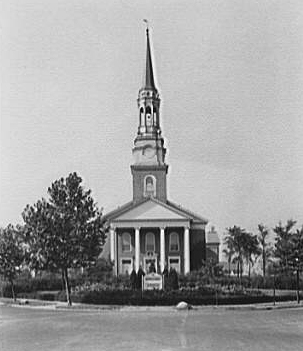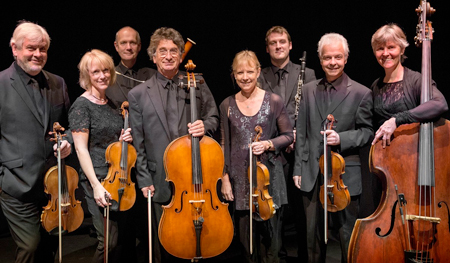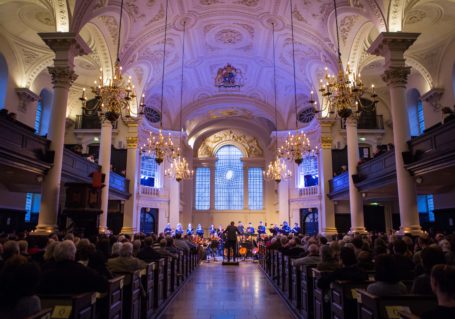by Daniel Hathaway

Not many musical groups are so closely associated in spirit and substance with a building as is the Academy of St. Martin with the grand parish church built to the plans of architect James Gibbs in 1720.
Only the second church to occupy its central London site on Trafalgar Square, St. Martin’s, inspired by Greek and Roman temples, established a style that was widely applied to ecclesiastical buildings during the restoration of the City churches after the Great Fire of 1666 by such architects as Christopher Wren. And made its mark on American Protestant church buildings like Plymouth UCC in Shaker Heights (below).

Determined to serve as a cultural center as well as an organization dedicated to religious, societal, and justice issues, St. Martin’s became a thoroughly modern Anglican organization in the mid-20th century. As its website notes, “ From London’s first free lending library to the first religious broadcast, St. Martin’s has broken new ground in defining what it means to be a church.”


Neville Marriner continued to direct from the podium and from the leader’s desk, holding the title of Life President until his death in 2016. Pianist Murray Perahia was named Principal Guest Conductor in 2000. Then, in a major organizational change, Joshua Bell was appointed Music Director in 2011.
The Academy of St. Martin in the Fields Chamber Ensemble, which will perform in Cleveland on October 18, was created in 1967 “to perform larger chamber works with players who customarily worked together, instead of the usual string quartet with additional guests.” Led by violinist Tomo Keller, the Chamber Ensemble performs in all configurations from string quintets to octets, and in various other combinations including wind players. The ensemble makes regular tours of Europe and North America, and has released more than 30 CDs.

Published on ClevelandClassical.com October 13, 2022.
Click here for a printable copy of this article



